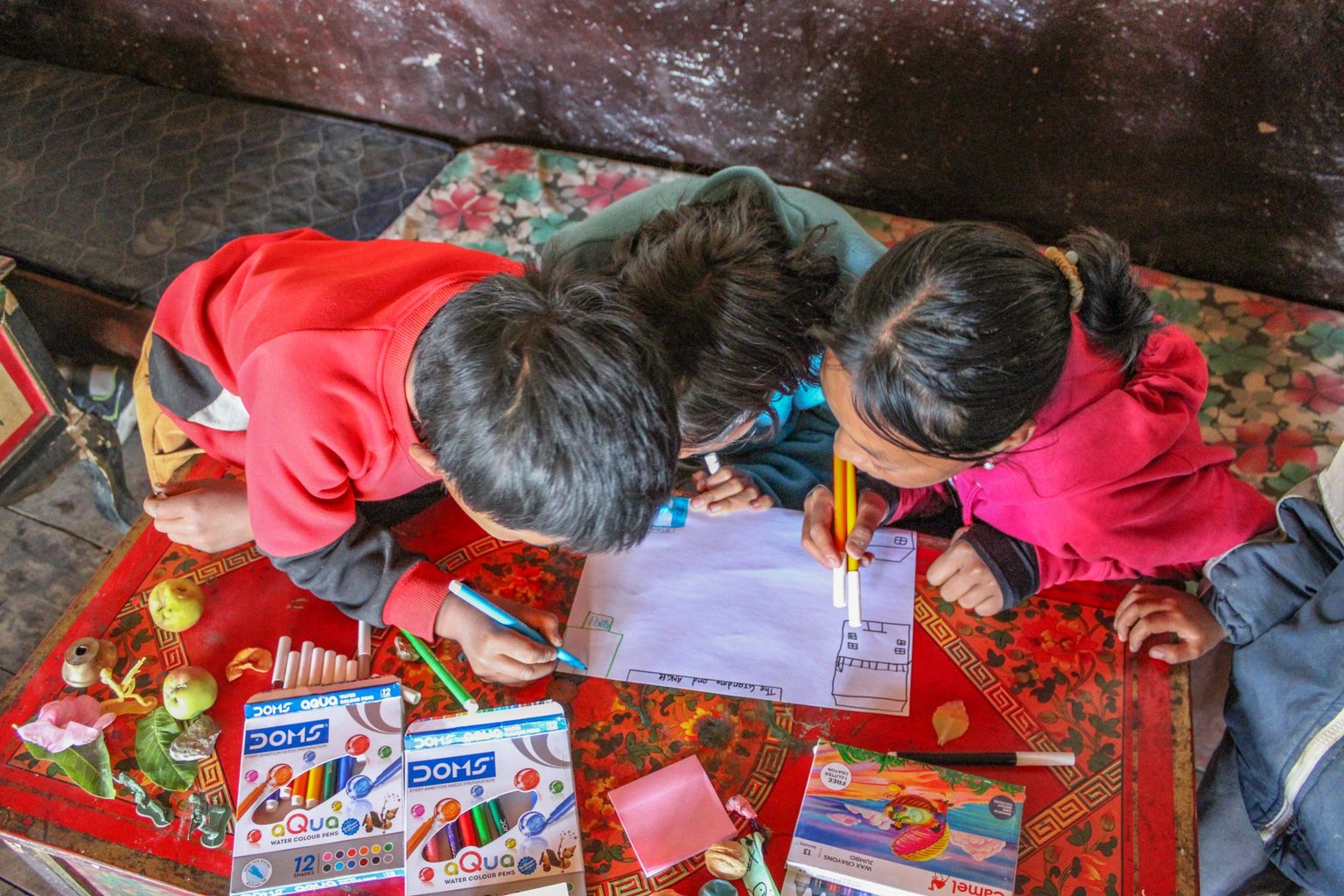
Sourcing Community Stories: Workshop reflections from Ghami, Mustang and Tinje, Dolpo
Nov. 13, 2025 Program Updates OLE Nepal
During September and October 2025, our team visited Ghami Basic School in Ghami, Mustang, and Siddhartha Kula Basic School in Tinje, Dolpo, for the second round of field activities under the LLEST project. This visit was designed to build upon the foundational work carried out during our initial visit last year in September 2024, when we had conducted orientation and training sessions, carried out teacher and student surveys, and deployed tablets and offline servers equipped with digital learning resources.
While the first visit focused on assessing the local learning contexts and laying the foundation for the collaboration, the primary objective of this year’s engagement was to facilitate community participation through story-building workshops. These workshops sought to source authentic narratives and stories from community members to expand the Hamro Ramailo Kathaharu (HRK) collection. Beyond sourcing the local stories, this visit also provided an opportunity to share updated learning materials, introduce newly developed courses under the LLEST project, and gather feedback to improve the ongoing content development.
The main goal of this visit was to conduct participatory storytelling, using an approach that enabled participants to engage fully regardless of their literacy levels, ages or language backgrounds. Workshops were also conducted in the regional language of each location, mediated by our local liaison. This made sure that participants could express themselves fully and authentically. Addressing the diversity of literacy levels among participants and their backgrounds, we adopted a variety of interactive techniques, including memory-based storytelling, personal reflections, drawing exercises, and prop-based enactments, to encourage engagement from all members of the community.
In preparation for the workshops, we undertook several months of careful planning. Activities were iteratively tested among our internal team members in our office and also with students at Snow Leopard Residence to ensure they could accommodate different age groups and encourage creative expression beyond traditional written formats. By emphasizing reflection, storytelling, performance, and collaboration, we sought to create an inclusive environment where every participant could contribute meaningfully to story creation.
In Tinje, Dolpo, a three-day workshop engaged fifteen participants representing different members of the community, including students, farmers, small business owners, and local artisans. On the other hand, in Ghami, Mustang, workshops involved eight students from grades 4–8 from Ghami Basic School.
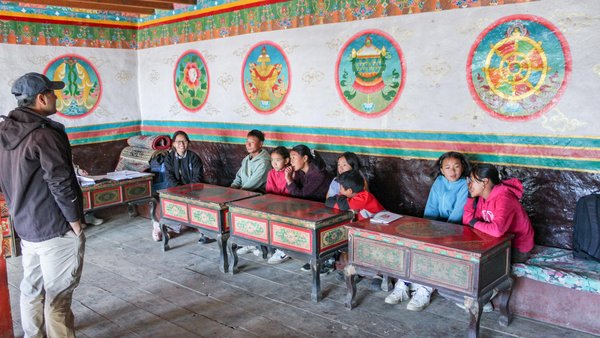
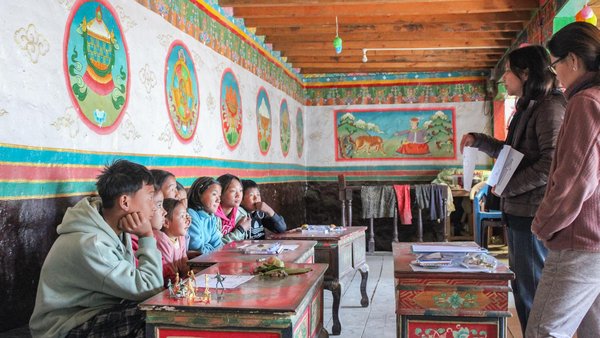
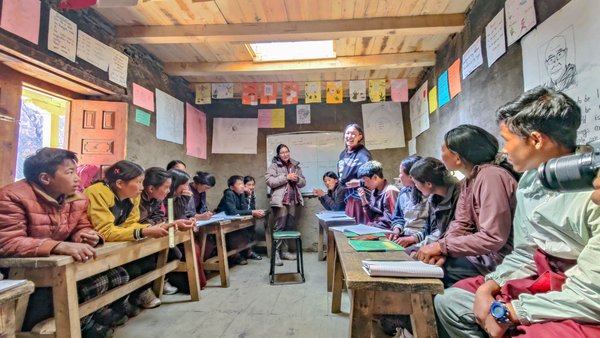
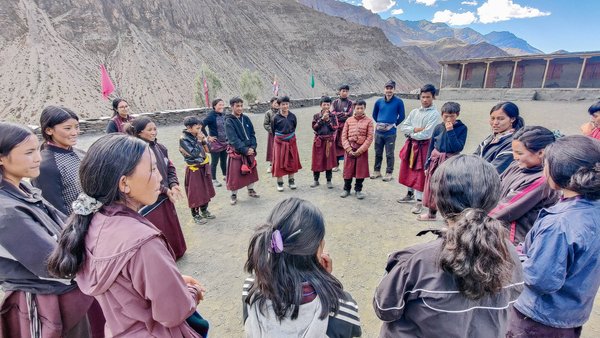
The workshops followed a structured approach across both locations. Sessions began with discussions on participants’ perceptions of stories and storytelling, using prompts such as: “What story taught you something?”, “What story gave you strength?”, and “Who do you know whose story does not get told?” Activities then focused on “memory recall” as a source of narratives for story development. Participants, for instance, shared experiences such as collecting dried dung for fuel, crossing rivers in the village, observing the arrival of trucks replacing manual labor, participating in local games, celebrating festivals like Yarthung, and daily household chores.
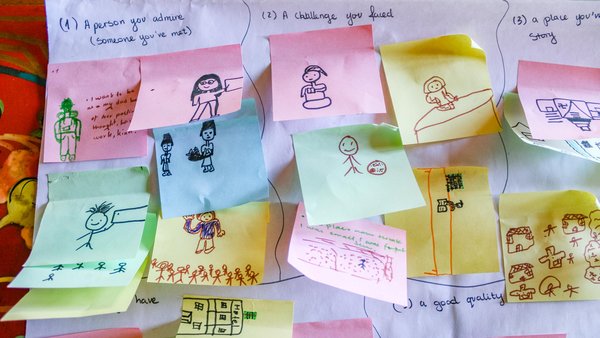
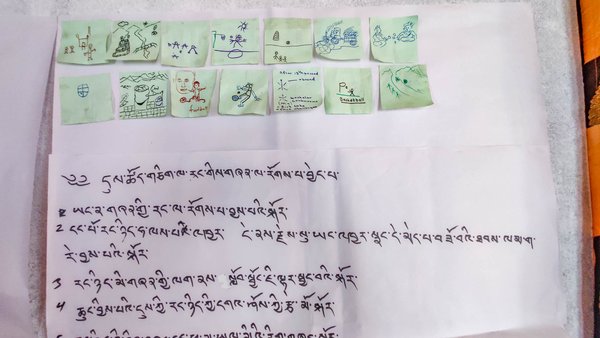
Prompts encouraged reflection on personal and communal experiences as well as aspirational narratives, including: “A time you helped someone or were helped,” “A challenge you overcame,” or “A family or community tradition you remember fondly.” Participants translated these prompts into simple drawings, later to be used as the building blocks of the stories. Additionally, the other activities also involved participants collecting objects from their surroundings where they collected items such as apples, leaves, twigs, walnuts, etc. which were ultimately integrated into storytelling as visual and tactile props.
During group activities, participants across both regions constructed 3D props, made the drawings of landscapes, and built the story characters using the objects collected from their surroundings as props for storytelling. They guided their stories with a clear beginning, middle, and end while incorporating humor, body language, sound effects, and interactive performance to enrich storytelling and bring narratives to life.
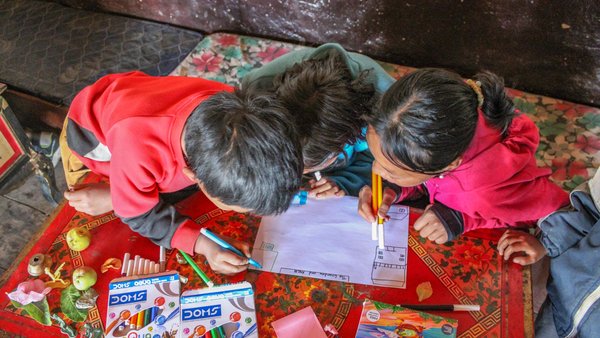
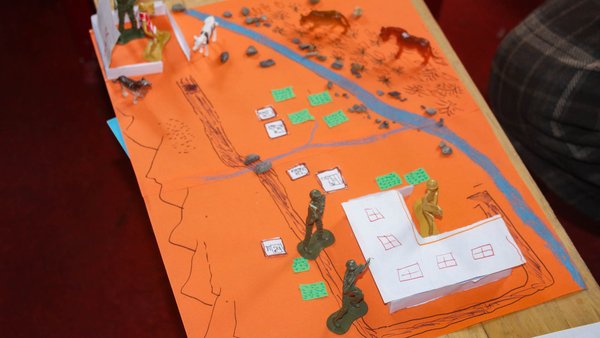


By the end of the completion of the workshops, we were able to generate a total of six original stories: four from Dolpo and two from Mustang. The stories reflect a broad range of themes, including village life, personal growth, education, cultural practices, and aspirations for the future. Each story was performed, recorded, and transcribed with the assistance of our local liaison, providing a rich source of contextual materials for adaptation into animated story content or similar digital learning resources. We believe the stories we sourced will form an integral part of the HRK collection, contributing to an expansive repository of culturally grounded, locally resonant learning materials.
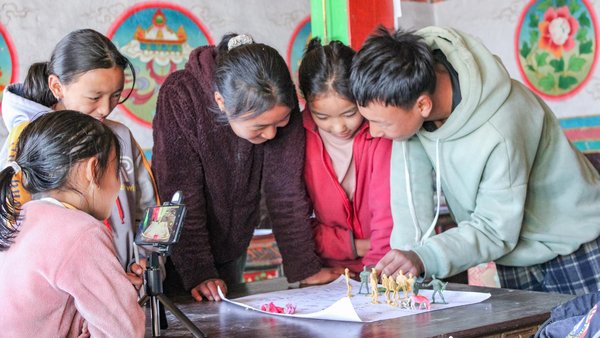

This second field visit reaffirmed several insights into community-centered educational interventions in remote contexts. Firstly, we reflected that using the local language and culturally appropriate methods is essential; holding the workshops entirely in local language allowed participants to share their experiences more fully, resulting in richer and more authentic stories. Secondly, the presence of a trusted local liaison was equally important for overcoming linguistic, cultural, and logistical challenges. They helped in ensuring smooth coordination, participant engagement, and continuity across workshop sessions. Thirdly, performance-based storytelling, supported by visual and tactile props, proved essential for engaging participants across varied literacy levels, age groups and backgrounds.
The visit also highlighted the broader role of technology in facilitating community learning. While tablets and offline servers are important for digital resources, meaningful engagement requires careful design of field activities that respects local knowledge, practices, and constraints. Sustained and effective participation relies on careful pre-field planning, responsive facilitation, and acknowledgment of community contributions.
Following this visit, we are focusing on refining the sourced stories, storyboarding them, and planning their integration into the HRK collection. Feedback from students and community members will guide the further development of those stories and other similar learning materials. Additionally, during the recent visit, the updated content was shared through mobile apps that work offline, making it accessible in schools with limited internet connectivity. Up next, we also plan to upgrade the apps over time to incorporate feedback and a full set of courses.
We extend heartfelt gratitude to all participants, students and teachers from Ghami Basic School and Siddhartha Kula Basic School, and also community members for their engagement and creative contributions. Special thanks to our local liaison, Ms. Mandel Sangmo Lama from Ghami Basic School, and Nwagang Gurung sir from Siddhartha Kula Basic School, for their support in facilitating communication, logistics, and workshop sessions. We are also grateful to our partner, ONGD-FNEL, for enabling these activities. We believe that the insights, stories, and collaborations generated during this field visit will significantly enrich the HRK collection and reinforce our commitment to developing learning resources that are both meaningful and locally grounded.